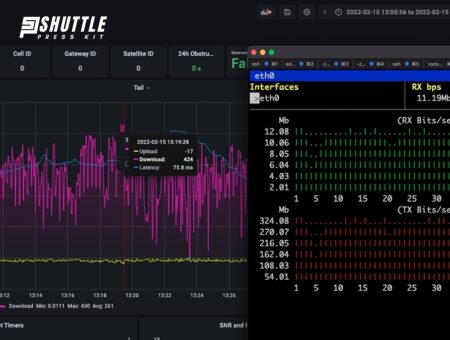Ever wonder if the internet from space supports the latest in networking standards? I’ve been right there, scratching my head, trying to figure out if Starlink keeps up with technologies like IPv6.
Trust me, setting up a network isn’t always as straightforward as it should be. And when you throw IPv6 into the mix – a critical evolution for our growing need for more internet addresses – things get even trickier!
So here’s the deal: Starlink does support IPv6. But, if you’re tinkering around with setups like Pfsense and Starlink together, there could be some hiccups. The thing is, even with technology leaping forward, not everything plays nice right off the bat. It can take some patience and problem-solving to get your setup smooth and speedy.
Understanding IPv6: The Future of Internet Protocol
IPv6 stands as the modern evolution in internet protocol, designed to significantly expand the number of available addresses. This innovation is critical for accommodating the ever-growing number of devices requiring unique IP addresses as we exhaust the limitations of the current IPv4 system.
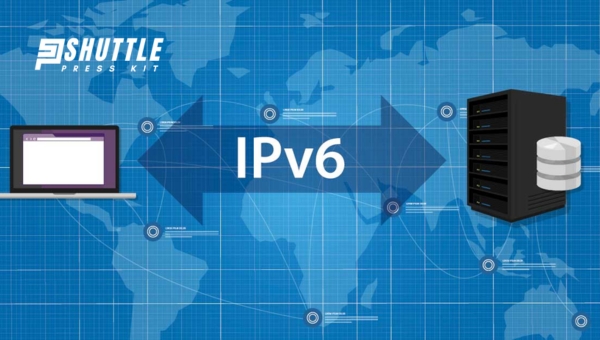
With its capacity to support a vast number of devices, IPv6 ensures seamless connectivity in our increasingly connected world. Importantly, it is compatible with most existing technology, including computers and smartphones, allowing for a smooth transition from IPv4.
Also Read: How to Fix Starlink Disconnected Error?
Does Starlink Support IPv6?
Yes, Starlink does support IPv6. Users are provided with an IPv4 address as well as a /56 IPv6 prefix assigned to their terminal.
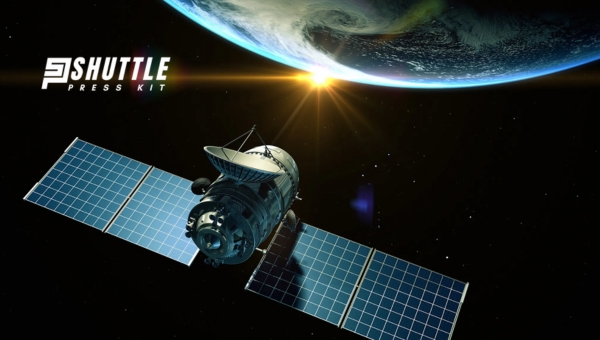
This assures compatibility with modern internet protocols and prepares users for future internet standards.
Pre-requisites for Using IPv6 on Starlink:
- Ensure you have an operating system that is compatible with IPv6. Recent versions of major operating systems like Windows and macOS support this natively.
- Acquire an IPv6-capable router if your home network setup requires one beyond what is provided by the standard Starlink Kit.
- Use the Ethernet adapter if needed to connect your router directly to the Starlink terminal.
It’s noteworthy that while most newer routers support IPv6, the original model included in early iterations of the Circular Starlink Kit may not offer this functionality.
The Advantages of Starlink’s IPv6 Support
Starlink’s adoption of IPv6 addresses a critical evolution in internet networking, providing a solution to the limitations imposed by the older IPv4 protocol.
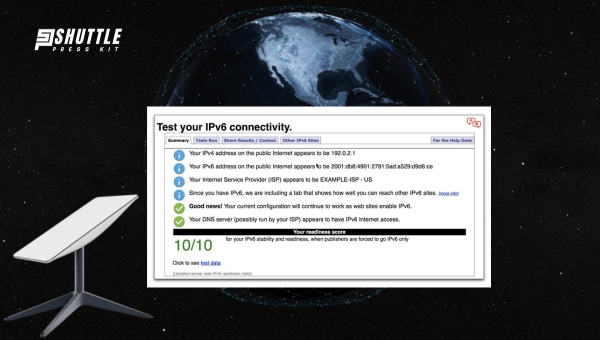
With an ever-growing number of devices connecting to the internet, IPv6 ensures scalable, secure, and efficient connectivity. But there is some disadvantages also. Here is the table for that:
| Advantages | Disadvantages |
|---|---|
| Increased Address Space: IPv6 provides a significantly larger pool of addresses compared to IPv4, allowing for more devices to be connected online without running out of unique identifiers. | Transition Complexity: Transitioning from IPv4 to IPv6 can be complex for existing networks, requiring updates or replacements for hardware and software that are not compatible with the newer protocol. |
| Enhanced Security: With built-in features such as mandatory support for IPsec (Internet Protocol Security), IPv6 offers improved security measures including end-to-end encryption, making data transmission across the internet safer. | Learning Curve: Network administrators may face a learning curve in understanding and configuring the new protocol, given its differences and expanded feature set compared to IPv4. |
| Improved Network Efficiency: Simplified packet headers in IPv6 reduce processing requirements on routers, potentially improving overall network efficiency and speed. | Dual-Stack Implementation Complexity: Implementing dual-stack environments (running IPV4 and IPV6 in parallel) can introduce additional complexity into network management until the transition is complete. |
| Adoption Rate: While adoption rates are increasing, not all parts of the internet fully support IPV6 yet. | This inconsistency can lead to connectivity issues or necessitate fallbacks to older standards. |
IPv6 With pfsense
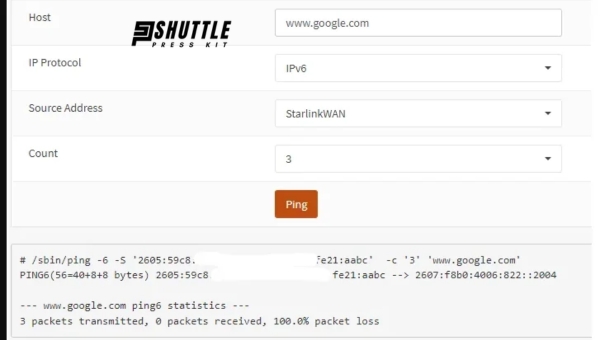
IPv6 implementation in pfSense enables you to leverage the latest internet protocol technology for more efficient and secure networking.
With an exponentially larger address space, IPv6 overcomes the limitations of IPv4, ensuring every device can have a unique IP address and improving overall network performance. Follow these essential steps to configure IPv6 in your pfSense setup:
- Step 1: WAN Interface Configuration
- Navigate to “Interfaces” and select your Starlink WAN interface.
- Note your interface ID, then set IPv4 Configuration Type to DHCP and IPv6 Configuration Type to DHCP6.
- Within “DHCP6 Client Configuration”, enable options like “Use IPv4 connectivity”, “Request only an IPv6 prefix”, and “Send IPv6 prefix hint”.
- Specify the “DHCPv6 Prefix Delegation size” as 56.
- Step 2: LAN Interface Setup
- Go to “Interfaces” again but this time select your LAN interface.
- In the “Track Interface” section, set the “IPv6 Interface” option to your previously configured WAN.
- Assign an “IPv6 Prefix ID”.
- Step 3: Enabling IPv6 Functionality Globally
- Visit “System” > “Advanced” and access the “Networking” tab where you should ensure that “Allow IPv6” is checked.
- Step 4: Configuring Gateway Monitoring
- Under “System” > “Routing,” pick your Starlink gateway tailored for IPv6.
- Set its monitor IP (e.g., using Google’s public DNS).
- Step5: Establishing a Cron Job
Choose either method based on preference:
Method 1: Install Cron via Package Manager, then schedule a job under Services.
Method 2: SSH into pfSense directly configuring a cron job via terminal commands.
By orderly following these straightforward steps in setting up IPVv or modifying specifics based on your network architecture or requirements, you ensure that pfSense efficiently manages IPVv traffic across your environ
Also Read: How To Activate Starlink Bypass Mode Quickly & Easily?
Frequently Asked Questions
Does Starlink support IPv6?
Yes, Starlink supports IPv6, allowing for a wider range of IP addresses and better connectivity compared to IPv4.
What are the steps to set up IPv6 on Starlink?
To enable IPv6 on Starlink, access your router’s settings and look for the IPv6 configuration options. Ensure it is enabled and follow any ISP-specific instructions if provided.
Can I encounter issues using pfSense with Starlink’s IPv6?
Some users might experience compatibility issues between pfSense and Starlink’s implementation of IPv6, potentially requiring custom configuration or firmware updates.
How can I resolve pfSense issues with Starlink and IPv6?
To fix connectivity issues, ensure your pfSense firewall is up to date and check both the Starlink community forums and pfSense documentation for specific settings or workarounds related to IPv6 compatibility.
Also Read: How Fast Is Starlink Internet? Discover The Speed Results!
Conclusion
Starlink, as a cutting-edge satellite internet service, has been evolving rapidly to cater to the diverse needs of its global user base. Its support for IPv6 is a testament to how the platform is aligning with modern internet standards – crucial for ensuring compatibility, security, and scalability.
While there may have been initial issues or concerns regarding setup with systems like pfSense, it’s clear that Starlink’s commitment to improving infrastructure and offering robust technical support is evident. Users looking forward to leveraging the full potential of their Starlink connection alongside IPv6 should rest assured.
